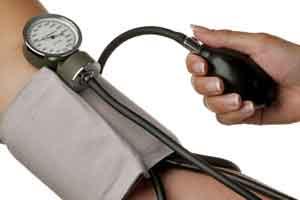- Home
- Editorial
- News
- Practice Guidelines
- Anesthesiology Guidelines
- Cancer Guidelines
- Cardiac Sciences Guidelines
- Critical Care Guidelines
- Dentistry Guidelines
- Dermatology Guidelines
- Diabetes and Endo Guidelines
- Diagnostics Guidelines
- ENT Guidelines
- Featured Practice Guidelines
- Gastroenterology Guidelines
- Geriatrics Guidelines
- Medicine Guidelines
- Nephrology Guidelines
- Neurosciences Guidelines
- Obs and Gynae Guidelines
- Ophthalmology Guidelines
- Orthopaedics Guidelines
- Paediatrics Guidelines
- Psychiatry Guidelines
- Pulmonology Guidelines
- Radiology Guidelines
- Surgery Guidelines
- Urology Guidelines
Now a beam of light can check your blood pressure more accurately

A device that monitors blood pressure by shining beam of light along the skin could be available in the next few months.The measurement of blood pressure by this method shall be more accurate than traditional cuff method. The new device, TLT Sapphire also aims to eliminate the risk of so-called white coat hypertension and as it can be worn for longer periods, so gives a more detailed assessment of the trend in blood pressure readings. The device has been developed by UK-based company Tarilian Laser Technologies.
The movement of the light beams changes in response to the pressure in the blood vessels — the device analyses these tiny changes to calculate blood pressure. An initial study showed it is more accurate than the traditional cuffs, and it is now being compared with the gold standard hospital blood pressure test in a new NHS trial.
The device is of size of a fingernail and thickness of a credit card and can be placed on an area of skin and held there with a plaster.It starts taking readings as soon as it’s in contact with skin. The device contains a tiny light bulb that sends beams of light parallel to the surface of the skin — a sensor in the device then measures any tiny movements in these beams, which are thought to be proportional to the blood pressure in the vessel beneath The readings can be sent wirelessly to a smartphone or computer every minute.
There are a number of problems with standard cuff monitors as they provide only a snapshot reading and work by detecting and measuring the vibrations of the blood against the artery walls.
The readings may be false if patients are anxious when seeing a doctor, which is termed as white coat hypertension.
A study conducted on 85 patients was presented at the European Society of Hypertension in 2012.It was demonstrated that the new technology outperformed cuff-based devices. The new technology could transform blood pressure care not only for critically ill patients, who will no longer need tubes inserted in arteries for monitoring but also for the “walking well”, where keeping track of blood pressure becomes as easy as checking an app on your phone.’

Disclaimer: This site is primarily intended for healthcare professionals. Any content/information on this website does not replace the advice of medical and/or health professionals and should not be construed as medical/diagnostic advice/endorsement or prescription. Use of this site is subject to our terms of use, privacy policy, advertisement policy. © 2020 Minerva Medical Treatment Pvt Ltd